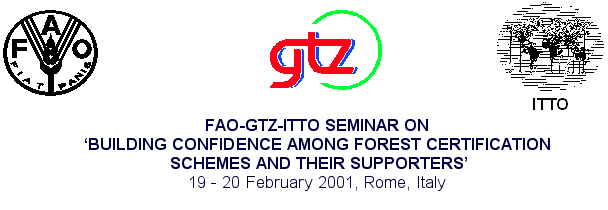Institutional issues
In social terms, all international certification systems face
one or several challenges to be credible. Among others, these challenges
include:
· Become simple enough to be transparent and replicable in a
multi-cultural context; i.e. local and external evaluations, should
produce similar results.
· Be economically non-discriminatory and become affordable for
communities with relatively small FMU.
· Be independent from both FMU coordinators and from government
officers.
· Avoid discriminatory practices, such as have only certifiers from the "north", or only
bureaucrats deciding certification standards and procedures.
| 


